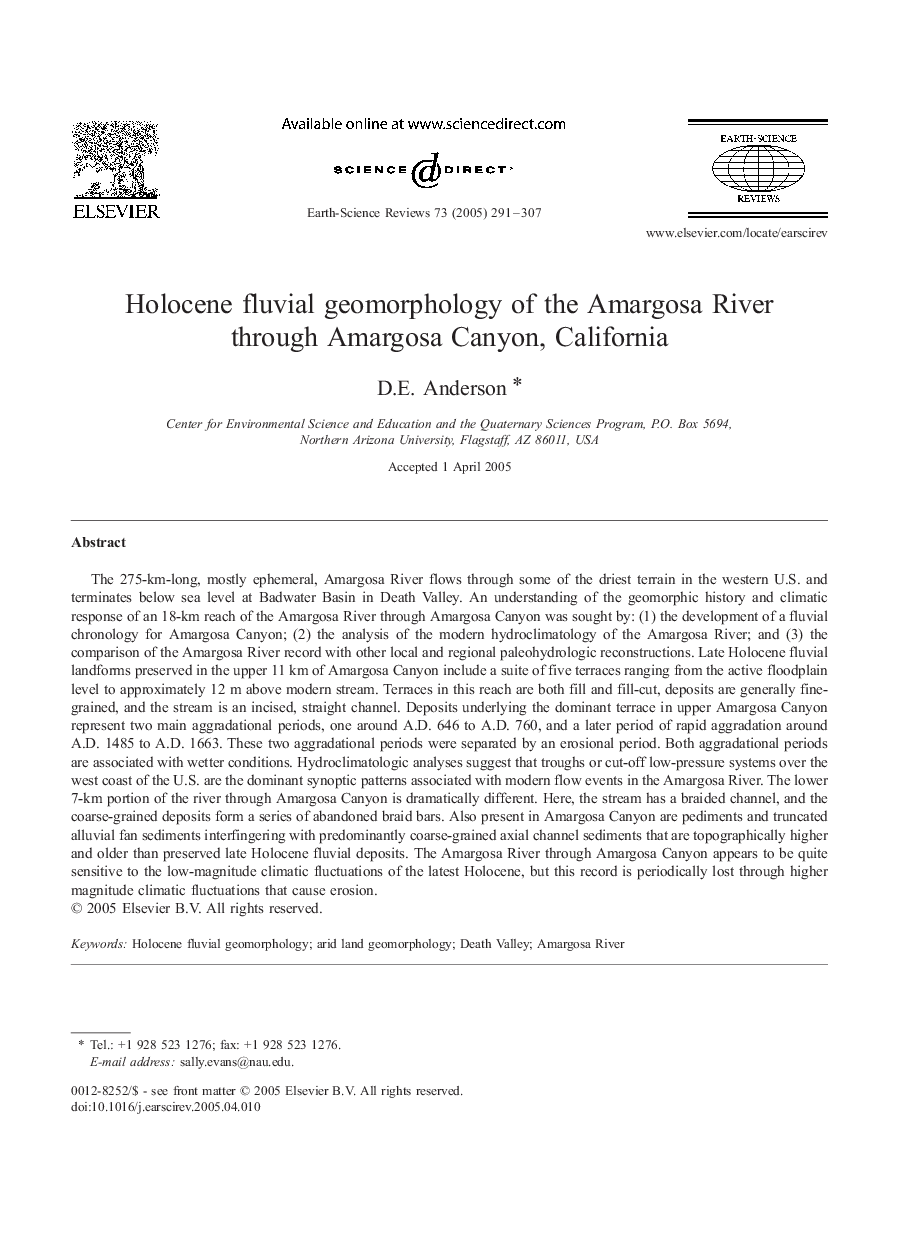| Article ID | Journal | Published Year | Pages | File Type |
|---|---|---|---|---|
| 9534287 | Earth-Science Reviews | 2005 | 17 Pages |
Abstract
The 275-km-long, mostly ephemeral, Amargosa River flows through some of the driest terrain in the western U.S. and terminates below sea level at Badwater Basin in Death Valley. An understanding of the geomorphic history and climatic response of an 18-km reach of the Amargosa River through Amargosa Canyon was sought by: (1) the development of a fluvial chronology for Amargosa Canyon; (2) the analysis of the modern hydroclimatology of the Amargosa River; and (3) the comparison of the Amargosa River record with other local and regional paleohydrologic reconstructions. Late Holocene fluvial landforms preserved in the upper 11 km of Amargosa Canyon include a suite of five terraces ranging from the active floodplain level to approximately 12 m above modern stream. Terraces in this reach are both fill and fill-cut, deposits are generally fine-grained, and the stream is an incised, straight channel. Deposits underlying the dominant terrace in upper Amargosa Canyon represent two main aggradational periods, one around A.D. 646 to A.D. 760, and a later period of rapid aggradation around A.D. 1485 to A.D. 1663. These two aggradational periods were separated by an erosional period. Both aggradational periods are associated with wetter conditions. Hydroclimatologic analyses suggest that troughs or cut-off low-pressure systems over the west coast of the U.S. are the dominant synoptic patterns associated with modern flow events in the Amargosa River. The lower 7-km portion of the river through Amargosa Canyon is dramatically different. Here, the stream has a braided channel, and the coarse-grained deposits form a series of abandoned braid bars. Also present in Amargosa Canyon are pediments and truncated alluvial fan sediments interfingering with predominantly coarse-grained axial channel sediments that are topographically higher and older than preserved late Holocene fluvial deposits. The Amargosa River through Amargosa Canyon appears to be quite sensitive to the low-magnitude climatic fluctuations of the latest Holocene, but this record is periodically lost through higher magnitude climatic fluctuations that cause erosion.
Keywords
Related Topics
Physical Sciences and Engineering
Earth and Planetary Sciences
Geology
Authors
D.E. Anderson,
